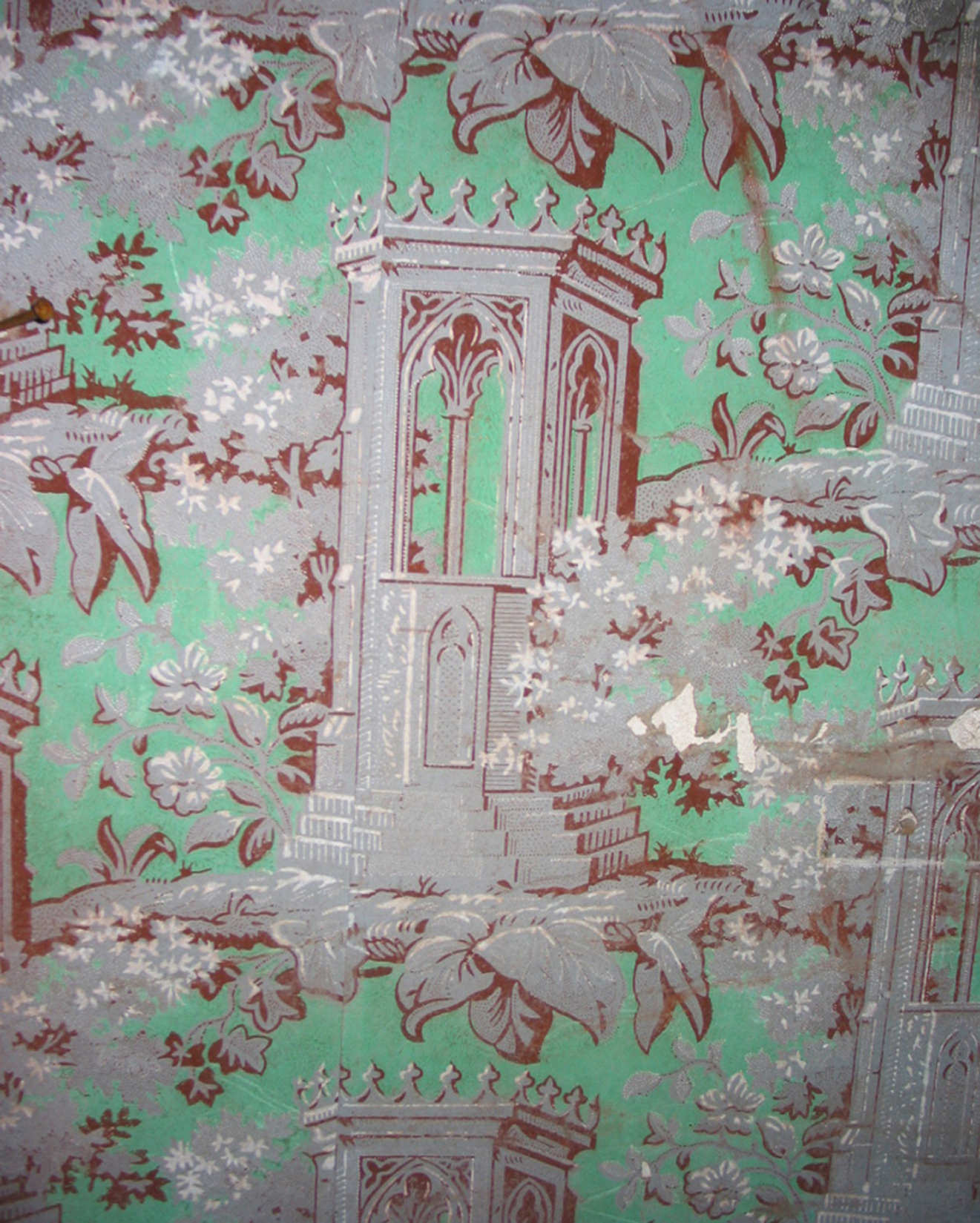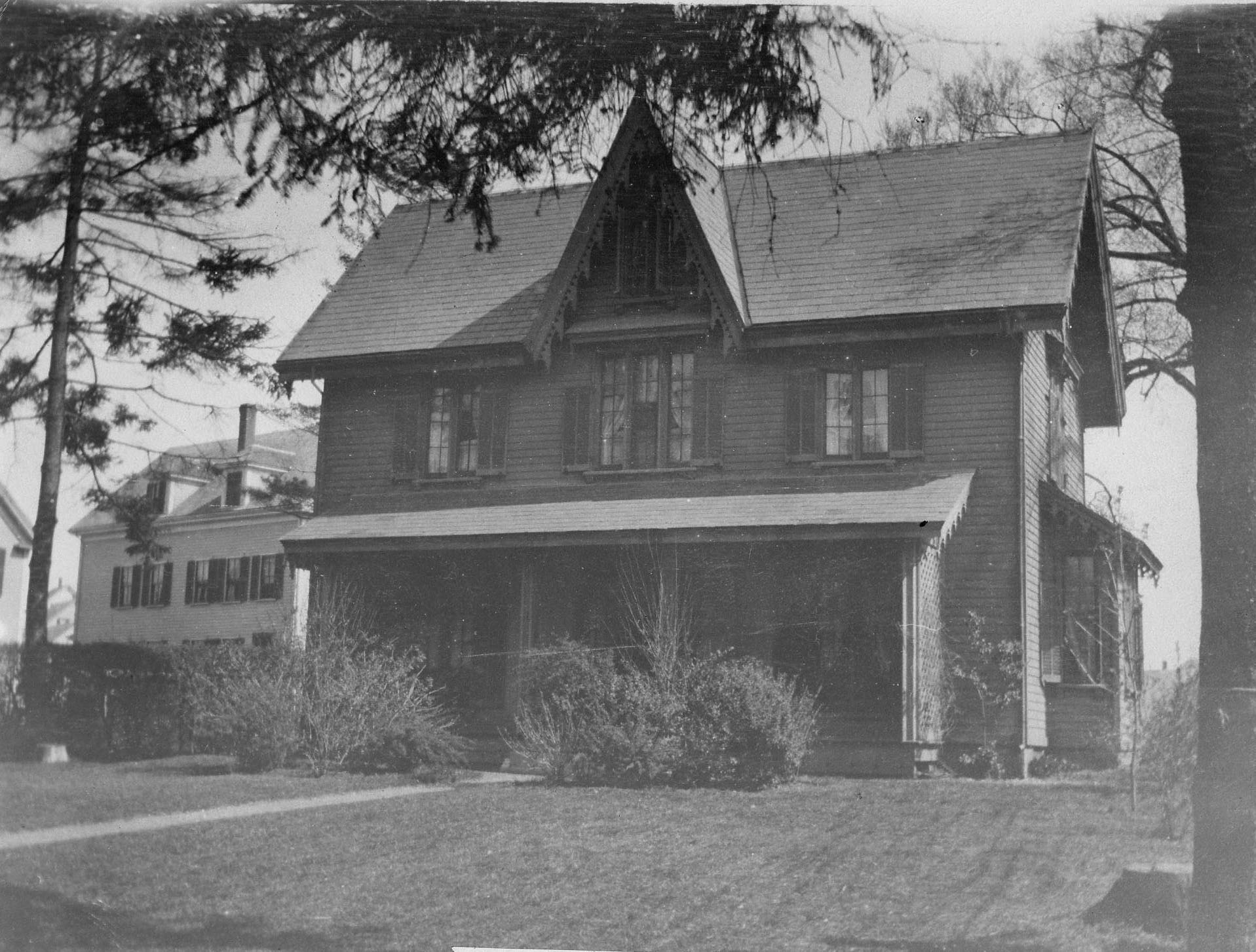In March of 2009, the Peabody Historical Society acquired a property of historic and architectural significance when it purchased the Sutton-Peirson house. The house was built in 1847 for General William Sutton, a former militia commander, state senator, and prosperous wool merchant, as a wedding present for his daughter Elizabeth upon her marriage to Abel Peirson. The single gable, the vergeboard detailed with trefoil motifs, and the lancet window on the third floor, make the house a prime example of the nascent Gothic Revival movement in American architecture in the mid-19th century. The original interior elements of the house mirror the structure’s Gothic Revival exterior. In particular, remnants of the house’s original wallpaper remain in the attic, including this example (above). It is the oldest example of wallpaper found in the house, and it dates to the time the house was built.
The medieval tower with trefoil motifs reflects the English Gothic Revival movement of the 1840s and 1850s. The emerald green background color was one of several newly discovered synthetic pigments of the mid-19th century. The bright green shade was derived from copper arsenite, a chemical compound containing arsenic. Wallpapers containing copper arsenite would release arsine gas, which, when inhaled by the people who lived within the walls that were papered with it, would sicken them. Only chemical analysis can determine if this example from the Sutton-Peirson house is actually an “arsenical” paper. Most of this wallpaper was subsequently papered over with another wallpaper, most likely due to the constantly changing tastes in home decoration than out of an awareness of the possible dangers of the chemical components of the paper.


